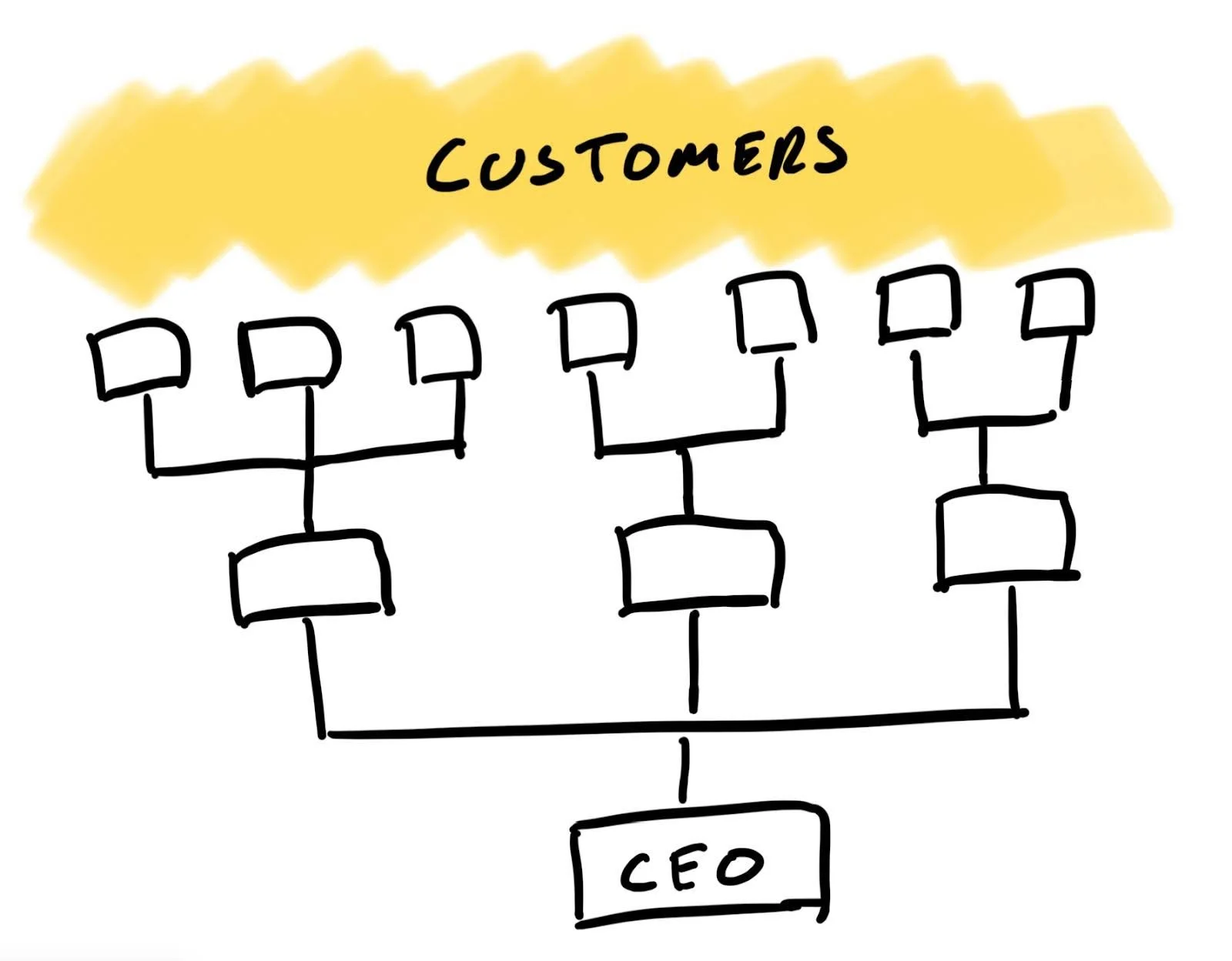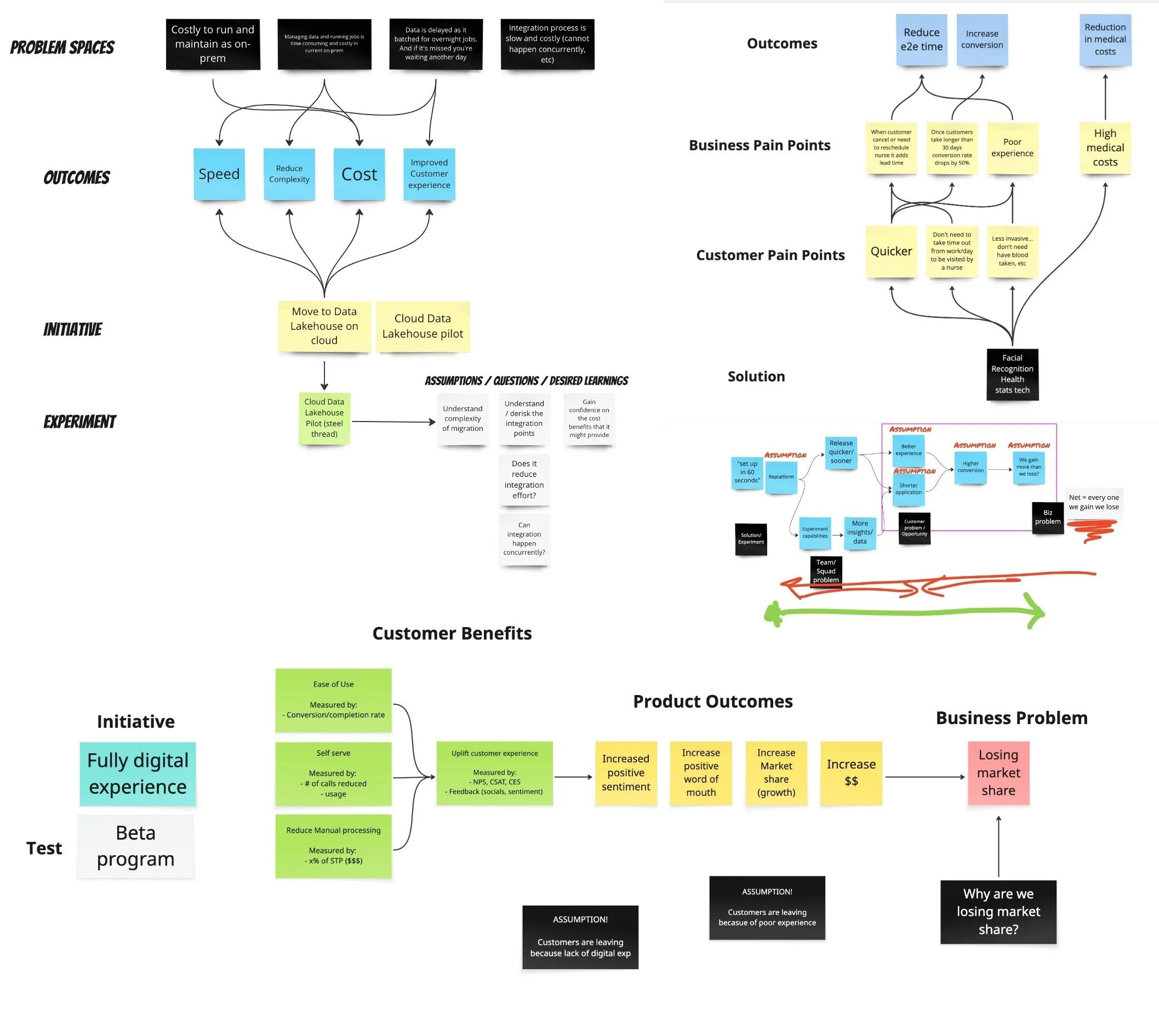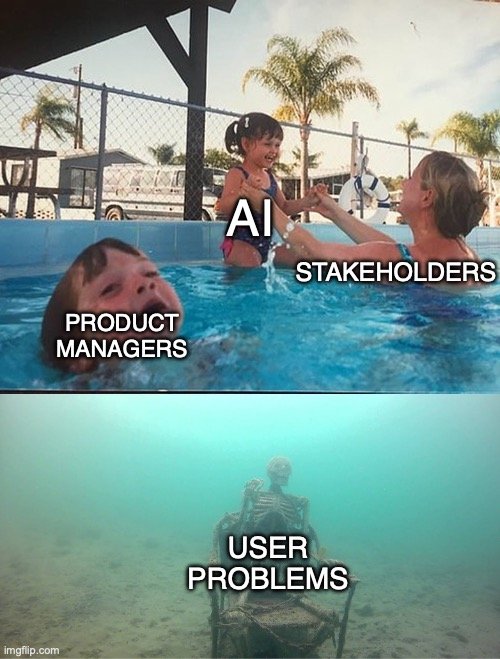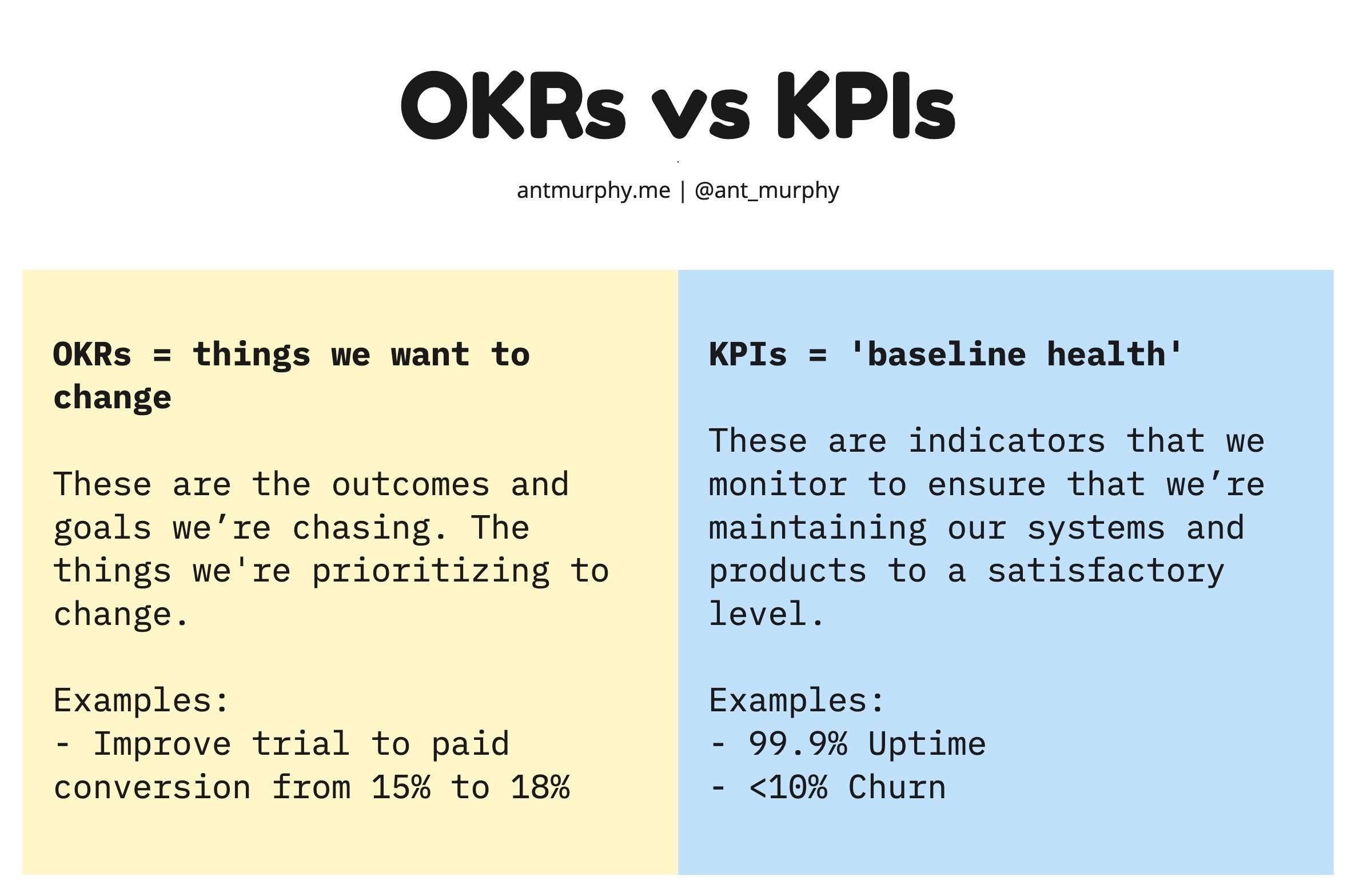Good Leader, Bad Leader
Hey I’m Ant and welcome to my newsletter where you will find practical lessons on building Products, Businesses and being a better Leader
You might have missed these recent posts:
- Don’t Follow Frameworks. Break them.
- Analytics IS Part of the Feature, not Separate!
- Let's talk Dual Track: Continuous Discovery and Delivery
I worked with a VP of Product who said something that really stuck with me;
“My job isn’t to make my life easier, it’s to make my team’s life easier.”
Servant leadership in a nutshell 👏
When I reflect on my career I feel very grateful to have had some many amazing leaders and mentors over the years. Including my first job packing supermarket shelves!
Of course, it hasn’t been all rosy. I’ve had my share of bad managers and have witnessed some, honestly, terrible behaviours.
But I don’t want to fixate on the bad. Instead I want to share some of the practices I’ve picked up from the best product leaders, executives and founders.
I hope this post is not only actionable but inspirational as well.
1. Make your team’s life easier, not yours
This was the second time I worked for Greg. He was a Product and Engineering leader, I worked with him at his last company and when I went out on my own as a Product Coach he hit me up.
During that engagement Greg and I were talking about meetings. Specifically those classic status update type meetings.
You know the ones where you go in a circle and everyone has to justify what they’ve done that week… yeah, those…
The problem with these meetings is who do they ultimately benefit?
The team member who has to sit through 29 minutes of updates that are mostly irrelevant to them to speak for 30 seconds?
Or the manager who only has to attend a single meeting vs pulling the information from different places?
Greg said something in response to this practice which will go down in my memory as a top leadership principle;
“Having a meeting with everyone is efficient for me… but my job isn’t to make MY life easier, it’s to make my TEAM’s life easier.”
This is servant leadership in a nutshell and something great leaders like Greg do.
They loath becoming an inconvenience.
They view their role as an enabler.
It’s to create the conditions for their people to do their best work, not be a burden.
So whilst their calendar looks like a losing game of tetris, people like Greg will work hard, even overtime to save you time, not themselves.
2. The org chart is upside down
Picture your typical organisational chart. Up the top is always the senior executives and then you have several branches cascading down, opening up into a bunch of lines and boxes that resemble a pyramid.
Now power dynamics, hierarchies and seniority all have their place and exist whether we want to acknowledge them or not.
But the “climb to the top” so to speak can create the feeling of earning your strips and therefore a level of superiority.
One of the undertones to leaders like Greg’s thinking above is that they don’t see it this way.
Their time is not more important than yours.
If anything they see it the other way around!
This is the essence of the military leadership principle; “leaders eat last.”
And I’ve worked for a few leaders like this (and I love to work with them as my clients!).
In their eyes, the organization chart is backwards. It’s the people in the coal face, in the trenches and front lines that should be at the top.
They are the people you work for as a leader.
3. Contributors not managers
60% of the stuff I see from big consultancy firms is rebranded content, 30% sounds like they just made up and 10% are things I disagree with.
A couple of years ago I came across one of the 10% when I was told about the ‘Thinker/Doer/Watcher’ model.
The idea is that in a company you should have around:
75% “Doers”
10-15% “Thinkers”
and 15% “Watchers”
What struck me as odd with this concept is that the best companies I’ve seen operate have doers at every level.
Everyone is a contributor just in different ways.
There’s no “Thinkers” or “Watchers”. I can’t imagine being a watcher, seems like a boring job (and feel free to correct me if I completely missed the intent too by the way).
The best leaders I know contribute in many ways;
They regularly speak with their customers, analyse data, do research, craft the product strategy, define what problems to solve.
They create onboarding processes, interview practices and continuously head hunting for top people to join their team.
They craft things like role competency matrix, promotion rubrics and coach their team.
I could go on but there’s nothing passive about being a great leader.
These leaders aren’t hiring “doers” to delegate to. They’re hands on in their own right. Creating the things the team needs to improve.
FYI I’ve created a litmus test for this with my clients. I like to see how different leaders act when I give them a Miro board or a task.
Do they ‘roll their sleeves up’ and jump into the board and start adding things - or do they delegate?
It’s a great test to see which leaders are willing to get involved vs those who don’t.
Now, this isn’t to say delegation isn’t important - of course it is - but you need to know what to delegate vs not.
I had a recent example of this with my own business.
I delegated tracking and analysing a bunch of content metrics to my assistant. But after a few weeks I started to feel like my finger wasn’t on the pulse anymore. Knowing what content is resonating with my audience isn’t something I can (or should) delegate.
Side bar: hopefully you can see how this all connects. A leader who puts her team first and doesn’t see her time as more valuable would be hesitant about delegating.
They would ask themselves, what are the team working on and is it more or less important than this thing I’m about to ask them to do?
And if they see their job as creating the conditions for their team to do their best work they would be mindful of context switching and breaking their focus.
4. Adapt your style
Going back to those horrible status meetings, if you’re always trying to make your life more convenient you’re going to make a bad manager - sorry!
Whether you like it or not, people have different preferences and styles. And when the product you manage as a leader is your team, you need to invest in discovery and getting to know them, their styles, preferences, etc.
This also means adapting your style to theirs.
Of course this doesn't mean becoming a characterless person but you do need to adapt at times. Let me give you some tangible examples.
Last year I did a fractional product leadership role to cover a friend's maternity leave. During which the Product Managers had to set their individual goals for the year.
Now it could have easily come up with a ‘one size fits all’ plan like;
Draft goals need to be in the system by X date and written in XYZ format
1st feedback round X date
1-on-1 reviews and then sign goals off.
But whilst this looks nice and probably would have made my life easier as I’m having 1-on-1s at the same time, etc, it wouldn’t have worked for everyone.
Some people might like to draft their goals first, others might like someone to bounce ideas from.
Some might love a format to follow, others find it restricting.
Some might like to use the goal setting tool, others might prefer to draft in a miro board or something.
We’re all different and all a ‘one size fits all’ approach does is unfairly give those it suits an advantage.
So instead I left it open and gave a bunch of options.
And I got the full spectrum!
Some drafted their goals first. Mostly in the goal-setting tool but one sent me a word doc!
Others wanted a chat first. One a few workshops to bounce ideas off each other.
Some preferred asynchronous feedback through comments, others wanted that 1-on-1.
I also provided a format they could use but only half of them followed it.
And that’s ok.
The end state is the same. We got their goals set.
But more importantly, hopefully I got their best goals out of them By creating an environment where their best thinking can happen.
The best leaders don’t assume everyone wants a weekly 1-on-1. Some people love them, others don’t.
Instead they find ways to still achieve the outcome by adapting. Even if it means more effort for you as a leader.
5. Share your notes
I worked with a CPO who would share her notes from every executive meeting with her team.
A straight copy & paste. No editing nor reframing the message.
This is a great example of leading with "context over control".
I’ve since done the same in many scenarios and speaking to the points above, when I can, I’ll rewrite my notes so they are easier to digest.
I’ve even recorded quick Loom videos in the past, especially for events like strategy offsites where I had visuals that I wanted to share.
6. Share everything
I worked in a startup where every Friday, we would end the week with a whole-team meeting (this was pre-COVID, and we were all in the office), during which we would walk through all the details of the business.
I’m talking about:
people changes
policy changes
general updates
sales pipeline
and even how much money we had in the bank and our runway.
And sometimes the news wasn’t good.
Sometimes it was “we only have 3-4 months of runway left… we either need to close a big deal, if not we’re going to have to let people go.”
Bad leaders want to shield their people from this kind of information. They allow themselves to be controlled by their fear of how people will react.
But your people aren’t stupid. They can tell.
I’m sure you can think of times where you can just tell. There’s subtle signs that something is going on.
The best leaders I’ve worked with are radically transparent.
They know that if they don’t tackle it head on, people will jump to conclusions - often the worst-case scenarios which are often much worse than the truth!
And people are grown ups too. They can handle bad news.
For that startup, it didn’t cause mass panic and chaos. Instead, it brought us together. I saw engineers jumping into pitches trying to help close deals and people reaching out to their network and contacts.
It was amazing!
7. Managers need to be a team too!
We throw the phrase “leadership team” and “executive team” around but how often do these people actually act like a team?
One of the best executive teams I've worked with spent a full day together every week.
That's 20% of their time together!
Even if you blocked out a full day every 2 weeks, that's only 10% and the majority of management teams struggle to get 30 mins together so no surprise when they’re not aligned and there’s competing priorities.
That executive team I mentioned earlier was one of the most aligned and cohesive exec teams and organisations I’ve seen.
And it was no surprise. They invested and put in the work to collaborate and create that alignment.
Side bar: anyone could get on the agenda for those full day sessions which was great because there was a direct line to not just one executive but ALL of them!
This also had the side benefit that if you needed something escalated or if you wanted to share something there was an avenue not too far away. As opposed to waiting for the next quarterly (or worse yearly!) offsite.
Now I get that one full day might seem impossible, or even overkill.
Although I’d argue a bunch of the points above:
Create the conditions for your people to do their best work = spending a day together ensures that the leaders are aligned (not two execs with competing priorities). It’s an investment in creating the best environment, culture, organisational clarity and making key decisions.
Contributor not manager = a great leader isn’t in meetings all day, they contribute. Spending a day together as a leadership team means you’re creating the space to build, measure and learn together. Those days are working sessions, not a chit-chat.
But I get if a full day is a tall ask, so here’s an alternative:
Start your week with an 1 hour lean coffee as a leadership team (this is great to do even as a product trio).
Starting your week together and going through all the top priority things, even if it’s not to solve them but to plan together, will be a game changer!
And worse case if it doesn’t just stop doing them. Risk free experiment.
Wrap Up
So the best leaders I’ve worked with;
Put their team first
See their roles as working for their people, not the other way around
Adapt their style to the context and their people
Are willing to get their hands dirty and create more work for themselves if it means helping their team
Are contributors in their own right
Are radically transparent
And they see themselves as a leadership team and invest time in working together
I’d love to hear what you’d add or if there have been any unique and highly effective leadership practices that you’ve seen.
And as usual, thanks for reading and all the support!
Share this with someone who needs to read this - it also helps this newsletter because a lot of subscribers come from recommendations 🙏
















Your OKRs don’t live in a vacuum.
Yet this is exactly how I see many organizations treat their OKRs.
They jump on the bandwagon and create OKRs void of any context.
Here’s what I see all the time…